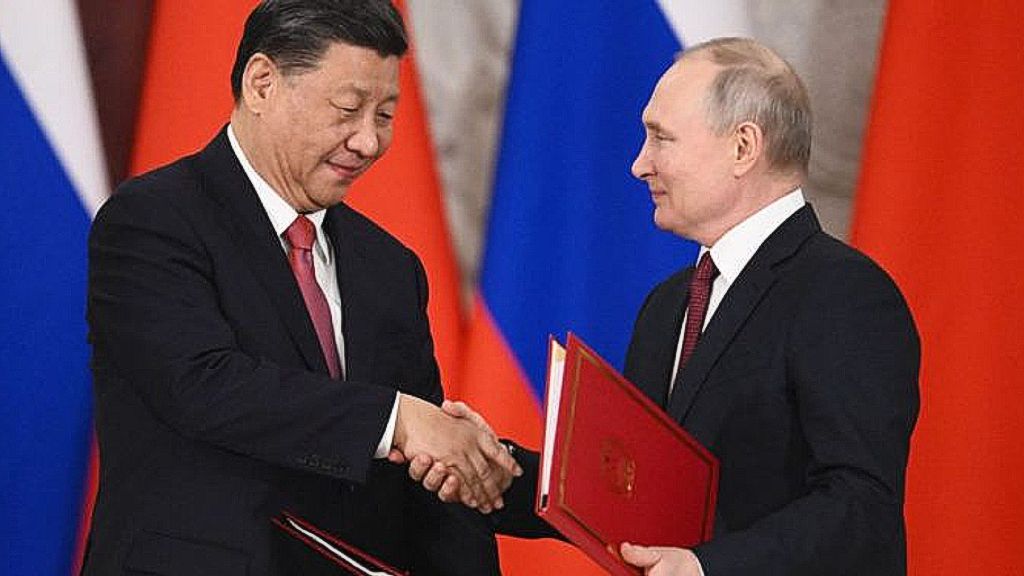It’s become more important than Washington’s official alliances today.
Chinese President Xi Jinping’s decision to visit Moscow this week in his first trip abroad since his reelection comes as no surprise to those who have been watching carefully. When one steps back and analyzes the relationship between China and Russia, the brute facts cannot be denied: Along every dimension—personal, economic, military, and diplomatic—the undeclared alliance that Xi has built with Russian President Vladimir Putin has become much more consequential than most of the United States’ official alliances today.
Chinese President Xi Jinping’s decision to visit Moscow this week in his first trip abroad since his reelection comes as no surprise to those who have been watching carefully. When one steps back and analyzes the relationship between China and Russia, the brute facts cannot be denied: Along every dimension—personal, economic, military, and diplomatic—the undeclared alliance that Xi has built with Russian President Vladimir Putin has become much more consequential than most of the United States’ official alliances today.
Many observers still find this alliance hard to believe. As former U.S. Defense Secretary James Mattis put it in 2018, Moscow and Beijing have a “natural nonconvergence of interests.” Geography, history, culture, and economics—all the factors that students of international relations focus on—give both nations many reasons to be adversaries.
On today’s map, large swaths of what was in earlier centuries Chinese territory are now within Russia’s borders. This includes Moscow’s key naval base in the Pacific, Vladivostok—which on Chinese military maps is still labeled by its Chinese name, Haishenwai. The 2,500-mile border between the two nations has repeatedly seen violent clashes, most recently in 1969. On the Russian side, the land east of the Ural Mountains is full of natural resources but has a population of just 32 million people, while on the Chinese side, hundreds of millions of people live with few natural resources.







